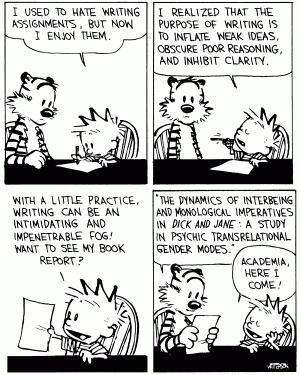
“Is this wheat, or chaff?”
“It’s cotton, stupid.”
Image courtesy of Winslow Homer.
I will readily admit that revisions are extremely difficult for me. One of the things I dread most about finishing a project is the prospect of then having to begin revising it. It’s difficult for me to precisely identify what it is about revisions that bothers me so much; some times I feel overwhelmed by the sheer volume of imperfect material that I have to slog through, while other times it’s a question of beating down my ego in order to recognize what is wheat and what is chaff, and how to separate the two.
Point is, revisions are not my favorite thing.

These pencils. In my eyes.
More often than not during the revisions process, I find myself staring at my manuscript until the black words marching across the page begin to swirl like ants being flushed down the toilet. I’ll force myself to tinker with a few sentences here and there, rearranging words without much confidence that any one phrase is better than another. And then I’ll give up, shuffling off to stab pencils into my eyes out of pure frustration.









